2023 Harvest Report
Every year we work to bring you the highest quality products at the best prices. This season we have done just that. We have some new vineyards being added to the portfolio that will knock your socks off! And there will be new wine grapes available from the high-quality, reliable sources you’ve come to know and love.
Let’s get started with the Harvest Report!
To keep up to date on harvest dates check in with us via sales@juicegrape.com or call us at 877-812-1137, follow us on Facebook, Instagram, and Youtube, or check out the Harvest Tracker and Winemaker Blog on our website- juicegrape.com.
THE GRAPES
Suisun Valley, CA – Lanza-Musto Vineyards: Suisun Valley was established in 1982 and is one of the oldest AVAs in California. Suisun Valley is home to a group of grape growers and winemakers who put their heart and soul into everything that they do. Located southeast of Napa Valley (sharing a county line), Suisun Valley lies in the foot slopes of good grape land between the picturesque Vaca Mountains to the east and St. George Range to the west. The Suisun Bay that connects to the San Francisco Bay sits to the south, lending a unique cooling coastal breeze. The soil is made up of volcanic rock, silt, sand, and clay allowing it to grow many different types of wine grapes; having over 28 varieties planted within this eight-mile-long and three-mile-wide AVA. We are expecting a high-quality year! The grapes got some decent rain, which resulted in fertile soils, nutrient-rich vines, and exceptional skin quality. The crop looks to be the size of a normal crop year, and we are currently on track for normal ripening and harvesting times. The Lanzas are introducing a new box, which will be sturdier with ample airflow for travel. We will have Barbera, Chardonnay, Cabernet (Clone 169, Clone 15, and Clone 8), Merlot, Malbec, Muscat Cannelli, Petite Sirah, Petite Verdot, Riesling, Sangiovese, Sauvignon Blanc, Syrah, and Tempranillo available this fall.
Lodi, CA – Home to some of our oldest standing contracts and relationships, Lodi is a premier wine region consistently on the rise. With the LODI RULES sustainability effort moving full force through the AVA, we have seen and continue to see great wine-producing fruit come out of Lodi. During the growing season, warm, sunny days allow for optimal ripening of wine grapes. By contrast, cool winds off the Pacific Ocean which travel inland over a network of waterways act as a natural air conditioner for the region, helping winegrapes maintain balanced acidity. This season we have a “new” Primitivo coming in. We were able to procure some of it last season, but this season we will have a good amount of Old Vine Primitivo. This vineyard was planted in 1902! Along with this special Primitivo, we will have fruit from Mettler Ranch, Costamagna Vineyards, Zinderella, Valley Beauty, and Contra Costa just to name a few. This season we should start to see Lodi fruit come off the vine in early September. It is looking to be a normal-sized crop with good-looking berry bunches and seed development. We should see Lodi fruit start coming off the vine in early September, hitting MWG’s dock around early-mid September.
Central Valley, CA– Central Valley is California’s agricultural heartland. It is composed of two valleys that stretch almost 500 miles down the center of the state. The Sacramento Valley and San Joaquin Valley border on the east, by the Sierra Nevada Mountains. The total acreage under wine grape cultivation in the Central Valley is around 895,000 acres. To say Central Valley is the leader in California’s wine grape production would be an understatement. With many sub-AVAs, the Central Valley offers a lot of delicious winemaking grapes with a lot of history. Some of the oldest grape vines in California are grown in Central Valley. Since it is a hotter region, these will be some of the first to come off the vine. If you are interested in Central Valley fruit be ready to crush after Labor Day.
Washington State– We are excited to be bringing you a new vineyard option from Washington this season – Candy Mountain AVA. One of Washington States’ newest AVAs, Candy Mountains’ south-facing slope sits just southeast of the Red Mountain AVA. At around 900 acres, it’s also the smallest AVA in the state. With outstanding growing conditions, it produces, rich fruit-forward grapes with nice minerality and tannins. We will be bringing in Cabernet from Candy Mountain this season. It is looking like a lighter crop and an earlier season this year for Washington State. Candy Mountain is looking to harvest around September 25th, and Wahluke Merlot around the 1st week in October. The Wahluke Cabernet Franc should start to harvest around October 15th. Our Pinot Noir from Rattlesnake Hills should harvest the earliest, sometime around September 20th.
THE JUICES
We bring in juices from all over the world! Below is information regarding our juices and their availability this fall.
California Fresh Juice – We source premium California juice from all over the state. Winemaking juices are a great resource. You can make great wine without bulky equipment. Our fresh juices are ready to ferment when you get home. They have native yeast in them from the grape skins. You can let the native fermentation take place or you can inoculate with your preferred yeast. Either way, you will have a delicious wine that is ready to drink sooner than later. *We always suggest adding yeast because of how long the juice traveled.
California Fresco Juice– The difference between the Fresco Juices and the Fresh Juices is that the Fresco Juices are inoculated with yeast, enzymes, and other “seasonings” that help the wines have a successful fermentation, better color, aromas, tannic structure, and mouthfeel. We call it the “set and forget” juice. It is a great product that produces high-end results.
Italian Fresh Juice– We source premium juices from Puglia and other regions of Italy. These juices create wines that resemble that of the old country. Wines full of flavor and history! They have native yeast in them from the grape skins. You can let the native fermentation take place or you can inoculate with your preferred yeast. *We always suggest adding your own yeast because of how long the juice traveled.
Italian Fresco Juice– The difference between Fresco Juices and Fresh Juices is that the Fresco Juices are inoculated with yeast, enzymes, and other “seasonings” that help the wines have a successful fermentation, better color, aromas, tannic structure, and mouthfeel. We call it the “set and forget” juice. It is a great product that produces high-end results.
NY State – Our NY State portfolio offers hybrid winemaking juices in 5-gallon, 60-gallon, and 275-gallon sizes. Due to this season’s frost, we will not have as many varieties available. Please email or call Christina if you are interested in these juices.
As always Mother Nature can throw us a curve ball. To keep up to date on harvest dates check in with us via sales@juicegrape.com or call us at 877-812-1137, follow us on Facebook, Instagram, and Youtube, or check out the Harvest Tracker and Winemaker Blog on our website- juicegrape.com.
Top 7 Winemaking Tips for the Spring Harvest
The Spring Harvest is underway! It’s time to get yourself set up for your Spring fermentations.
-
Plan out your batch
- What kind of wine do you want to make?
- Review your ferementation notes from previous seasons
- Taste wines from Chile and South Africa for inspiration
-
Review how to adjust your must
- Adjusting your Brix, TA, and pH
- Take an online class if need a referesher
-
If making wine from juice, decide on Fresco vs. Non Fresco Juices
-
Decide on the type of yeast you want to use
-
PRE ORDER
- Give us a call at 877-812-1137 or email us at sales@juicegrape.com
-
Think about the temperatures in your cellar
- Do you need extra heat?
- Do you need AC?
-
Keep an eye on the Harvest Tracker for updates on the Spring Harvest
Interested in making your own wine? Musto Wine Grape Company is here to help! Musto’s New England’s largest supplier for home winemaking products and services. Visit juicegrape.com or give us a call at (877) 812 – 1137 to learn more.
How to Make Syrah Wine from Chilean Wine Grapes
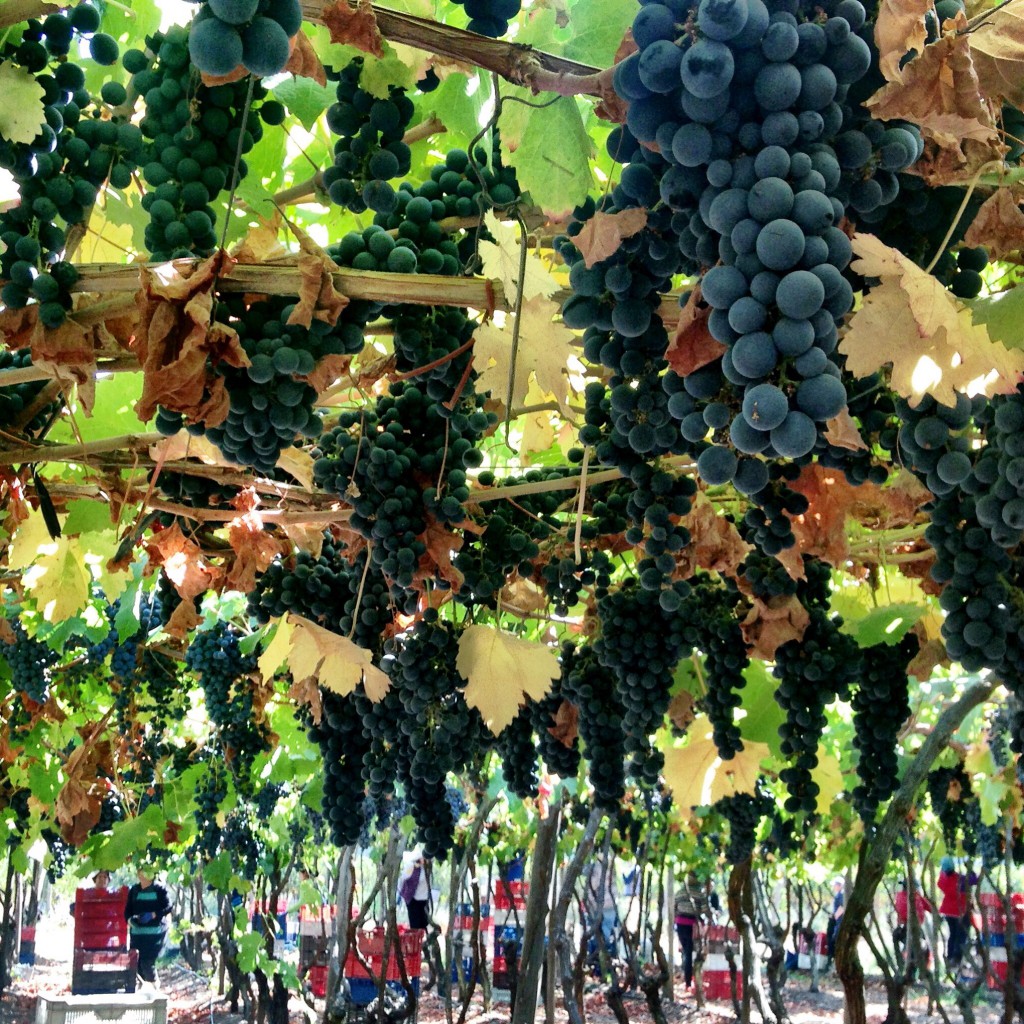
Chilean Syrah from Colchagua Valley has received high praise from publications like Wine Enthusiast, earning 93+pts. It’s a wine variety that is often overlooked from Chile and is a wine worth making this season. Chilean Syrah boasts flavors of plum, wild berry, and earth aromas. I highly suggest introducing this wine to oak barrels or an oak infusion. The medium acidity and powerful aromas are complemented by the French Oak flavor profile.
Yeast Suggestion: CSM yeast
Oak Suggestion: French oak barrels or chips
Wine Flavor Profile: Bold, medium tannins, blackberry, plum, wild berry, leather, smoke, chocolate, and oak
How to Make Syrah Wine from Chilean Wine Grapes:
- Crush Syrah grapes into a sanitized bin or tub. (Each 18lb crate will make 1.25 gals of finished wine).
- Apply 50ppm of Potassium Metabisulfite and stir well. Allow to sit for 8-12 hours.
- Apply .5ml of Color Pro Pectic enzyme per box diluted into a 10% solution with water to the must and stir. Allow to sit for another 8-12 hours.
- Mix Booster Rouge, FT Rouge, and Opti-Red, with spring water until it is the consistency of pancake batter and pour over top of crushed grapes. Mix in well.
- Add rehydrate CSM yeast (1g/gal) with Go Ferm rehydration nutrient and warm water. Allow to sit for 15 minutes and pour over top of crushed grapes.
- Punch down grapes 3 times per day throughout the duration of fermentation and monitor temperature and Brix levels daily. Use a hydrometer to test sugar content in a strained juice sample. Make sure the temperature does not exceed 85F.
- One day after adding the yeast, add Fermaid O, mixed with spring water into the pancake batter style slurry. Dump into grapes during a punch down.
- After the depletion of 1/3 of the Brix (when the Brix level is between 16-11), add Fermaid O that is mixed with spring water into the pancake batter style slurry. Dump into to grapes at a punch down.
- Add Malo-lactic bacteria the same day as the Fermaid K. If you are using liquid cultures, just pour over the grape must and mix. If you use the dry cultures, rehydrate them in warm spring water according to their specific directions, utilizing any rehydration nutrients recommended.
- When the Brix have dropped below zero, press the wine into a sanitized tank, carboy, or demijohn. Make sure the vessel is topped up all the way to the top of the neck and sealed properly with a bung and airlock.
- Rack after 48 hours and then again in a week. Allow MLF to complete before adding sulfites.
- Allow the wine to age and rack it every 2 months and add sulfites when racking.
- Add oak infusion after 2nd or 3rd racking. Taste test along the way until the oak profile is where you want it to be.
Interested in making your own wine? Musto Wine Grape Company is here to help! Musto’s New England’s largest supplier for home winemaking products and services. Visit juicegrape.com or give us a call at (877) 812 – 1137 to learn more.
What is Bud Break?
Happy first day of Spring Winemakers!
Our California grapes are starting to go through bud break.
Here is a nice view of our Cry Baby Thompson Seedless and Grenache grapes “waking up” 🍇
What is Bud Break?
Bud break is the start of the grape vine’s annual cycle. It is a relaxing time in the vine’s life as long as they don’t experience any intense weather occurrences, such as frost. Frost can kill the buds or delay their growth.
Check out what Bud Break looks like in Chile! (link)
Interested in making your own wine? Musto Wine Grape Company is here to help! Musto’s New England’s largest supplier for home winemaking products and services. Visit juicegrape.com or give us a call at (877) 812 – 1137 to learn more.
Product Spotlight: CSM Yeast
Product Spotlight: CSM Yeast
CSM yeast was derived from Bordeaux and helps create a vibrant aromatic profile. CSM aids in adding complexity to the palate and pairs well with malolactic fermentation.
Why you want to use it:
It’s the perfect yeast for the Chilean fruit. It reduces vegetal aromas, adds complexity, stabilizes color, and helps increase the aromatic profiles of berries and spices.
Use Tips:
Fermentation starts quickly with this yeast. Be prepared to see Brix drop 24 hours after inoculation. It can stand up 14% ABV and can handle temperatures from 59–90°F. However, I highly suggest keeping your fermentation temps lower than 75°F. Once you hit 80°F you lose aromas and “burn off” flavors. Keeping your wine between 59–75°F during fermentation is a best practice.
You also want to use nutrients when using CSM; nutrients such as Fermaid-O and Fermaid-K. CSM tends to produce H2S (rotten egg smell) if there aren’t enough nutrients during fermentation.
Avoid cold shocking the yeast at inoculation. You’ll want to get the must and the yeast starter within a few degrees of each other before pitching the yeast starter. But without temperatures falling lower than 55°F. Temps below 55°F could stall fermentation and/or kill the yeast.
Goes best with:
CSM was cultivated to help ferment Cabernet Sauvignon, Cabernet Franc, Grenache, Merlot, Sangiovese, Petit Verdot. However, we have seen it used on Carmenere, Malbec, and Syrah from Chile with great results.
Dosage:
6gm/gals
Flavor Profile:
Cherry pit, raspberry, blackberry, spice, violet, bark, and sweet pepper
Ready to make wine? Musto Wine Grape Company is here to help you make the wine of your dreams! The Spring South African & Chilean winemaking season starts soon! Secure your winemaking grapes or juices and give us a call at (877) 812-1137 to speak with one of our Musto Crush Crew members. We can get you set up with everything you need and provide customer support along the way to ensure your success!
Popular Red Grapes for Home Winemakers
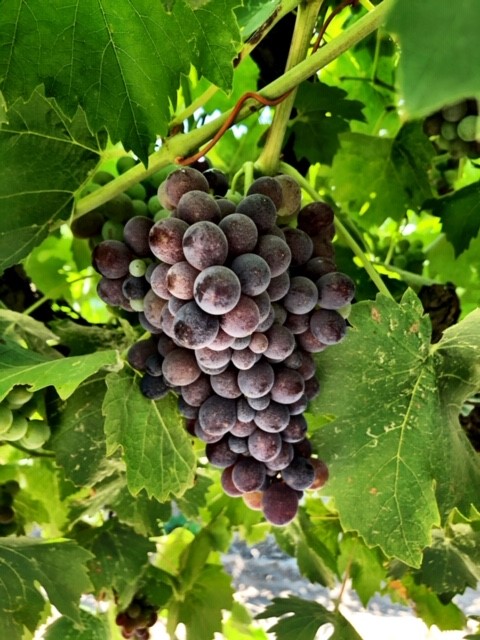
Ever wonder what the most popular red wine grapes are to use when making red wine at home? Well, wonder no more. Here is the list you’ve been looking for.
Try using these four popular red wine grapes as you begin your home wine making journey:
Cabernet
Merlot
Old Vine Zinfandel
Petite Sirah
Why these grapes you ask? Well, here are a few things to consider:
- Cabernet – This is age worthy wine; cellar for 10+ years, produces a dry and full bodied wine with medium to high tannins, medium acidity and has 5–15% ABV
- Merlot –This wine can be aged in your cellar for 10+ years and has flavors of cherry, plum, chocolate, bay leaf and vanilla with a tasting profile that makes it a bone-dry wine, with medium to full body, medium to high tannins, medium acidity and 13.5–15% ABV
- Old Vine Zinfandel – Ages for 5-10 years, it is a bold, fruit forward red that’s loved for its jammy fruit and smoky, exotic spice notes; it makes a dry red with medium to full bodied flavor, medium to high tannins, medium to low acidity and has over 15% ABV
- Petite Sirah – Another 10+ years of aging and is loved for its deeply colored wines with rich black fruit flavors including sugarplum, blueberry, dark chocolate, black pepper and black tea and makes a dry, full bodied wine with high tannins, low acidity and over 15% ABV
What red grape will you start with today? Let us know what popular red wine you are excited to start making this season.
Email sales@juicegrape.com or call 877-812-1137 to order or discus making wine from home!
Sources
Written by Michelle Griffis aka the Nutmeg Nose from MWG
Montepulciano 2020 By Joseph A. Picone, DMD
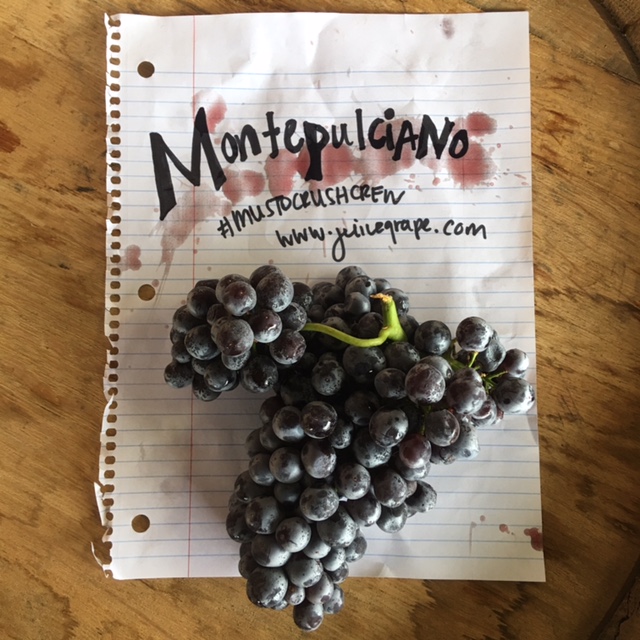
Montepulciano 2020 By Joseph A. Picone, DMD
I had the pleasure to obtain 10 (36lbs) cases of Montepulciano grapes from Musto Grapes (Frank Musto) on October 10, 2020. Making wine using the many varieties of first class Musto sourced grapes has been an Annual fall event for the Picone family and our friends for the past 30 years or so. Over the years, I have made Cabernet Sauvignon, Merlot, Old Vine Zinfandel, Sangiovese, Malbec, Reisling, Chardonnay, Sauvignon Blanc, Moscato, and White Zinfandel to name a few. Each having their own unique qualities to enjoy. Frank and his crew are great in providing all the resources and guidance needed for the first-time wine maker all the way to the seasoned-pro. I was fortunate to have taken a one semester class years ago at Naugatuck Community College on Wine Making given by Bob Herold which together with Frank’s support team has allowed me to create some delicious wines over the years.
I would like to share my experience with you on making this year’s Montepulciano 2020.
The grapes were outstanding. The Brix reading on the refractometer was 25. The clusters were full and the berries were a beautiful deep purple. The boxes were well packed with few if any leaves. We crushed the 360lbs of grapes and immediately added some potassium metabisulphite to kill any wild yeasts. My crusher is also a destemmer, so all the stems were separated from the must during this process. The pH of the must started at 3.70 which wasn’t surprising due to the high Brix reading. I added an appropriate amount of Tartaric acid to bring the pH to a more desirable 3.41 the day of crush. 25 ml of Color Pro enzyme was added at this time as well.
At approximately 24 hours post crush, the Must was inoculated with 35 grams of yeast BM 4X4 in a solution containing GoFerm yeast nutrient. The temperature of the Must at the time of inoculation was 60 degrees F. The yeast solution was well constituted throughout the must. Periodic punching down of the “cap’ was done every 6-8 hours throughout the primary fermentation time.
At 48 hours post crush, the Must temp was 66 degrees F at the Brix reading was 23.5. Fermaid O was added.
At 72 hours post crush, the Must temp was 75 degrees F and the Brix reading was 20. Fermaid K was added.
At 96 hours post crush, the Must temp was 82 degrees F and the Brix reading was 16. I added oak chips to the vat.
At 120 hours post crush, the Must temp was 78 degrees F and the Brix reading was 8.
At 144 hours post crush, the Must temp was 72 degrees F and the Brix reading was 4. 0.9mg of Malolactic culture VP41 was added to the Must and thoroughly mixed in.
At 168 hours(7 days) post crush, the Must temp was 70 degrees F and the Brix reading was 3. The Must and remnant skins were carefully pressed using a bladder press. The raw yield was approximately 27.5 gallons. The Must was placed in cleaned and sanitized demijohns utilizing airlocks to allow CO2 to escape while fermentation progresses, albeit very slowly. The residual skins were heavily consumed during the fermentation leaving behind very little structure. The color extraction was excellent and provided a deep rich purple wine. More Oak chips were added to each of the glass carboys/demijohns.
The slow fermentation in the demijohns went uneventfully and at 2 months, careful racking was accomplished and an appropriate amount of Potassium Metabisulphite was added to help kill off any more yeast cells(30ppm).
At 6 months post pressing, another racking was accomplished without the addition of any sulphites.
At 9 months, I have just begun bottling and I am very pleased with the wine. It is a crystal clear, deep purple, medium to full body, somewhat fruity flavored wine. I expect it to pair well most any dish but have enjoyed it with pasta, pork, veal, and chicken thus far.
Sincerely,
Joseph A. Picone, DMD






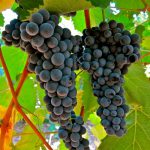
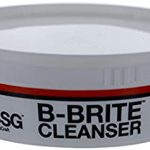
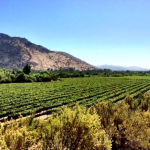
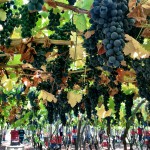
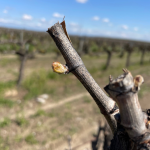
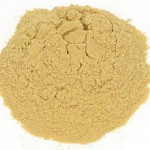
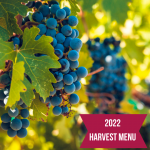
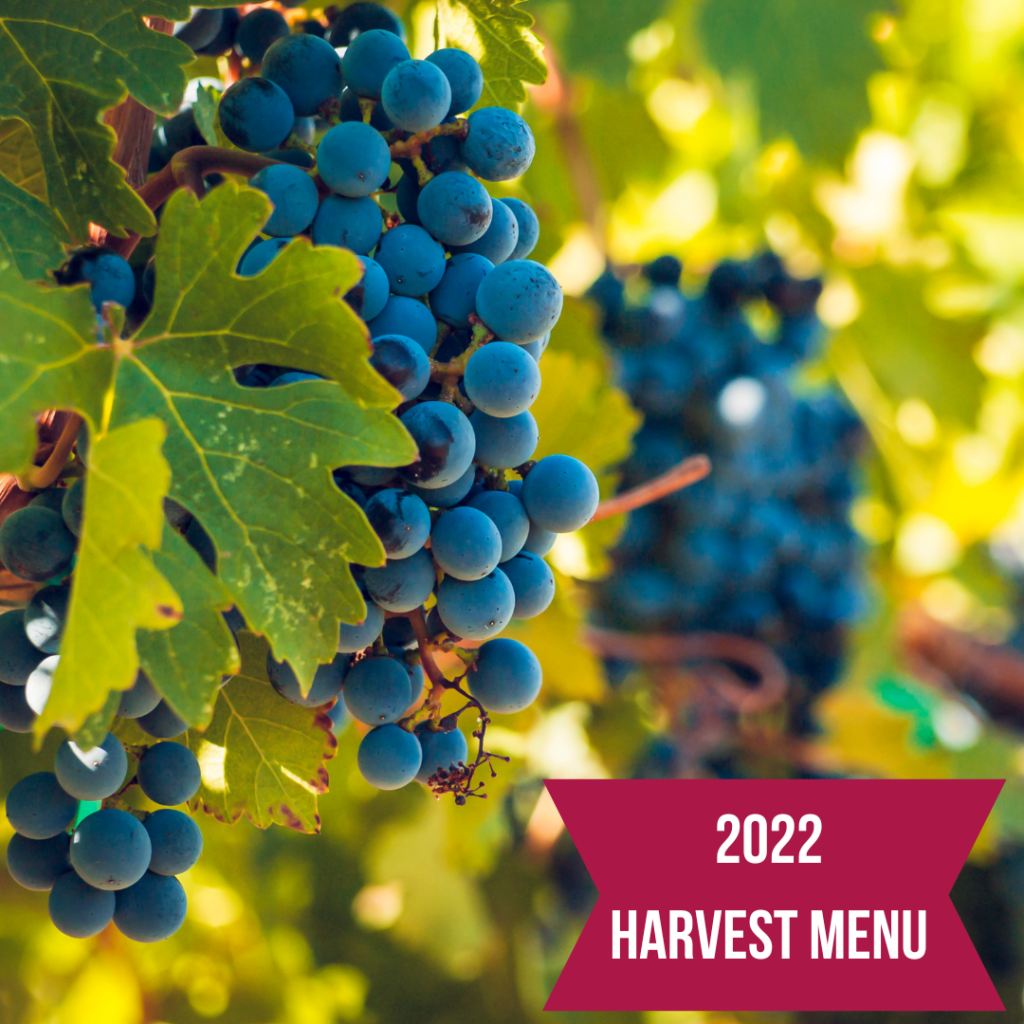
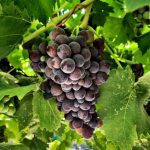
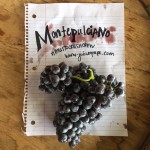

Recent Comments